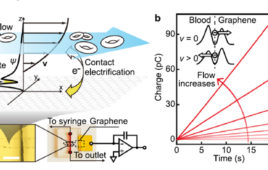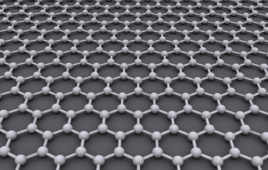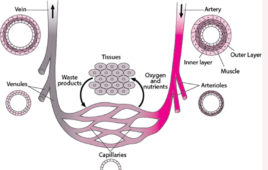Our January 2015 Letter from the Editor focused on the “wonder material” known as graphene. Discovered in 2004 at The University of Manchester, this one atom-thick, two-dimensional form of carbon is the thinnest material known to man. It’s also the world’s most conductive material and could even be the strongest.1
Research continues to churn out new discoveries and applications related to graphene. One such possibility is a treatment for gum disease. Antibiotic resistance can cause tooth loss, and new solutions are needed. Enter graphene oxide (carbon nanosheets studded with oxygen groups), which inhibit the growth of certain bacterial strains while causing minimal harm to mammalian cells. Studies showed that graphene oxide effectively slowed the growth of pathogens linked to gum disease and tooth decay, by destroying the bacterial cell walls and membranes.2
A study out of Australia shows that graphene can be used to develop flat displaying systems based on the intensity imitation within screens.3 Patterns of photo-reduced graphene oxide that are directly written by laser beam are able to produce wide-angle and full color 3D images. This technology could potentially display full color, wide-angle, 3D holographic images on cell phones, computers, TV, movies, and wearable devices. Graphene could be used to replace indium, a metallic element that has been commonly used for electronic devices. Carbon nanotube coatings, applied by wet-processing techniques, could also be a substitute for indium.4
Chinese researchers have found that soil bacteria communities become richer and more diverse when exposed to graphene oxide. However, since not much is known about its ecological impact, further study is needed. The alteration of bacterial species may or may not be beneficial for the environment, so researchers need to examine the effects on the soil properties as well as the plants grown in it.5
Less than one percent of the water on Earth is drinkable, but graphene could help increase that amount. Desalination can make seawater fit for human consumption and for farming, heating and cooling, etc. — however, it’s an energy-intensive process. Scientists at the Department of Energy’s Oak Ridge National Laboratory has demonstrated an energy-efficient desalination technology that uses a porous membrane made of strong, slim graphene. Graphene may be only one atom thick, but its “carbon honeycomb” allows a porous membrane that could be more permeable than a polymer membrane and would allow separated water to quickly drive through.6
Finally, Italian researchers have discovered that they could combine 300 nanometer-wide graphene particles or nanotubes with water, and then spray the solution onto spiders to get them to produce super-strong silk — enough so that their webs could catch a falling plane out of the sky. However, uses in fabrics or “bionic materials” are more likely.7 The research is still in its early stages and the scientists say that they are surprised by the results, but it will be interesting to see how this discovery can be applied.
Resources
- http://www.cemag.us/articles/2015/01/graphene-wonder-material
- http://www.cemag.us/news/2015/03/graphene-could-be-used-fight-cavities-and-gum-disease
- http://www.cemag.us/news/2015/04/graphene-brings-3d-images-clearer-closer
- http://minerals.usgs.gov/minerals/pubs/commodity/indium/mcs-2012-indiu.pdf
- http://www.cemag.us/news/2015/04/graphene-oxide-diversifies-soil-bacteria
- http://www.cemag.us/news/2015/03/promising-results-using-graphene-water-desalination
- http://www.wired.co.uk/news/archive/2015-05/06/graphene-spiders-super-silk




